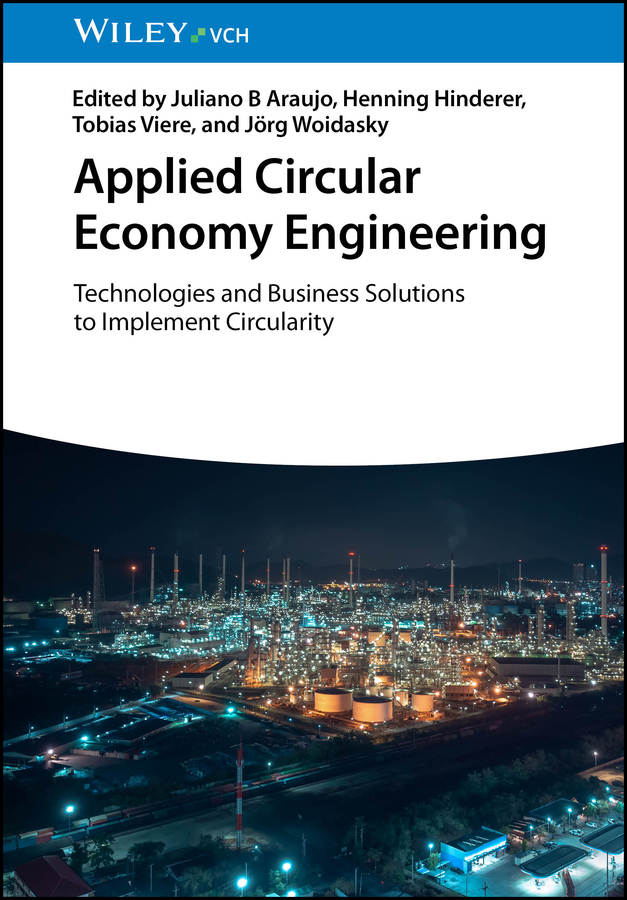Plasma Science and Technology
An accessible introduction to the fundamentals of plasma science and its applications
In Plasma Science and Technology: Lectures in Physics, Chemistry, Biology, and Engineering, distinguished researcher Dr. Alexander Fridman delivers a comprehensive introduction to plasma technology, including fulsome descriptions of the fundamentals of plasmas and discharges. The author discusses a wide variety of practical applications of the technology to medicine, energy, catalysis, coatings, and more, emphasizing engineering and science fundamentals.
Offering readers illuminating problems and concept questions to support understanding and self-study, the book also details organic and inorganic applications of plasma technologies, demonstrating its use in nature, in the lab, and in both novel and well-known applications. Readers will also find:
- A thorough introduction to the kinetics of excited atoms and molecules
- Comprehensive explorations of non-equilibrium atmospheric pressure cold discharges
- Practical discussions of plasma processing in microelectronics and other micro-technologies
- Expert treatments of plasma in environmental control technologies, including the cleaning of air, exhaust gases, water, and soil
Perfect for students of chemical engineering, physics, and chemistry, Plasma Science and Technology will also benefit professionals working in these fields who seek a contemporary refresher in the fundamentals of plasma science and its applications.
Alexander Fridman, PhD, is Nyheim Chair Professor and Director of the C&J Nyheim Plasma Institute of Drexel University, fellow of the US National Academy of Inventors. As one of the world's leading researchers in plasma science and engineering, he develops novel plasma approaches to material treatment, fuel conversion, hydrogen production, aerospace engineering, biology, medicine, environmental control, agriculture, and food processing.
1;Cover;12;Title Page;53;Copyright;64;Contents;95;Preface;336;Part I Plasma Fundamentals: Kinetics, Thermodynamics, Fluid Mechanics, and Electrodynamics;356.1;Chapter 1 The Major Component of the Universe, the Cornerstone of Microelectronics, The High?Tech Magic Wand of Technology;376.1.1;1.1 The Forth State of Matter: Plasma in Nature, in Lab, in Technology;376.1.2;1.2 Multiple Plasma Temperatures, Plasma Nonequilibrium, Thermal and Nonthermal Plasmas;396.1.3;1.3 Plasma Sources: Nonthermal, Thermal, and Transitional "Warm" Discharges, Discharges in Gases and Liquids;406.1.4;1.4 Plasma Processes: Major Plasma Components, High Selectivity and Controllability of Nonequilibrium Reactions, "Multidisciplinarity Without Borders";436.1.5;1.5 Plasma Technologies: The Cornerstone of Microelectronics, the Major Successes Stories;446.1.6;1.6 Electric Energy Consumption as a Challenge of Plasma Technologies, Plasma is the Future Because the Future is Electric;476.1.7;1.7 Plasma Today is a High?Tech Magic Wand of Modern Technology;486.2;Chapter 2 Elementary Processes of Charged Particles in Plasma;516.2.1;2.1 Elementary Charged Plasma Species and Their Transformation Pathways;516.2.2;2.2 Fundamental Characteristics and Parameters of Elementary Processes;526.2.3;2.3 Classification of Ionization Processes, Elastic Scattering and Energy Transfer in Coulomb Collisions;546.2.4;2.4 Direct Ionization of Atoms and Molecules by Electron Impact: Thomson Formula, Franck-Condon Principle;566.2.5;2.5 Stepwise Ionization by Electron Impact;576.2.6;2.6 Ionization by High?energy Electron Beams; Photoionization;586.2.7;2.7 Ionization in Collisions of Heavy Particles: Adiabatic Principle, Massey Parameter, Penning Ionization;596.2.8;2.8 Losses of Charged Particles: Mechanisms of Electron-Ion Recombination;606.2.9;2.9 Electron Losses in Electronegative Gases, Electron Attachment Processes;626.2.10;2.10 Electron Detachment from Negative Ions;666.2.11;2.11 Losses of Charged Particles: Mechanisms of Ion-Ion Recombination;676.2.12;2.12 Ion?molecular Processes: Polarization Collisions, Langevin Capture;716.2.13;2.13 Resonant and Nonresonant Ion?atomic Charge Transfer Processes;726.2.14;2.14 Ion?molecular Reactions with Rearrangement of Chemical Bonds, Plasma Catalysis;746.2.15;2.15 Problems and Concept Questions;756.2.15.1;2.15.1 Maxwell-Boltzmann Distribution Function;756.2.15.2;2.15.2 Positive and Negative Ions;756.2.15.3;2.15.3 Direct Ionization by Electron Impact;756.2.15.4;2.15.4 Stepwise Ionization;756.2.15.5;2.15.5 Electron Beam Propagation in Gases;756.2.15.6;2.15.6 Ionization in Ion?Neutral Collisions, Massey Parameter;756.2.15.7;2.15.7 Dissociative Electron-Ion Recombination;756.2.15.8;2.15.8 Dissociative Attachment;756.2.15.9;2.15.9 Detachment by Electron Impact;766.2.15.10;2.15.10 Langevin Capture Cross Section;766.2.15.11;2.15.11 Nonresonant Charge Exchange;766.3;Chapter 3 Elementary Processes of Excited Atoms and Molecules in Plasma;776.3.1;3.1 Vibrational Excitation of Molecules by Electron Impact;776.3.2;3.2 Rate Coefficients of Vibrational Excitation in Plasma, Fridman Approximation;786.3.3;3.3 Rotational Excitation of Molecules by Electron Impact;806.3.4;3.4 Electronic Excitation by Electron Impact: Metastable States, Dissociation of Molecules;816.3.5;3.5 Distribution of Electrons Energy in Nonthermal Discharges Between Different Channels of Excitation and Ionization;846.3.5.1;3.5.1 Elastic vs Inelastic Collisions;846.3.5.2;3.5.2 Exclusive Contribution of Discharge Energy to Vibrational Excitation;846.3.5.3;3.5.3 Effect of Superelastic Collisions on Contribution of Discharge Energy to Vibrational Excitation;856.3.5.4;3.5.4 Contribution of Electron Attachment, Electronic Excitation, and Ionization Processes;856.3.6;3.6 Vibrational?to?translational Energy Transfer Processes, VT?relaxation;866.3.6.1;3.6.1 Slow Adiabatic VT?relaxation of Harmonic Oscillators;866.3.6.2;3.6.2 VT?relaxation Rate Coef
Fridman, Alexander
| ISBN | 9783527834129 |
|---|---|
| Artikelnummer | 9783527834129 |
| Medientyp | E-Book - PDF |
| Copyrightjahr | 2023 |
| Verlag | Wiley-VCH |
| Umfang | 798 Seiten |
| Sprache | Englisch |
| Kopierschutz | Adobe DRM |







